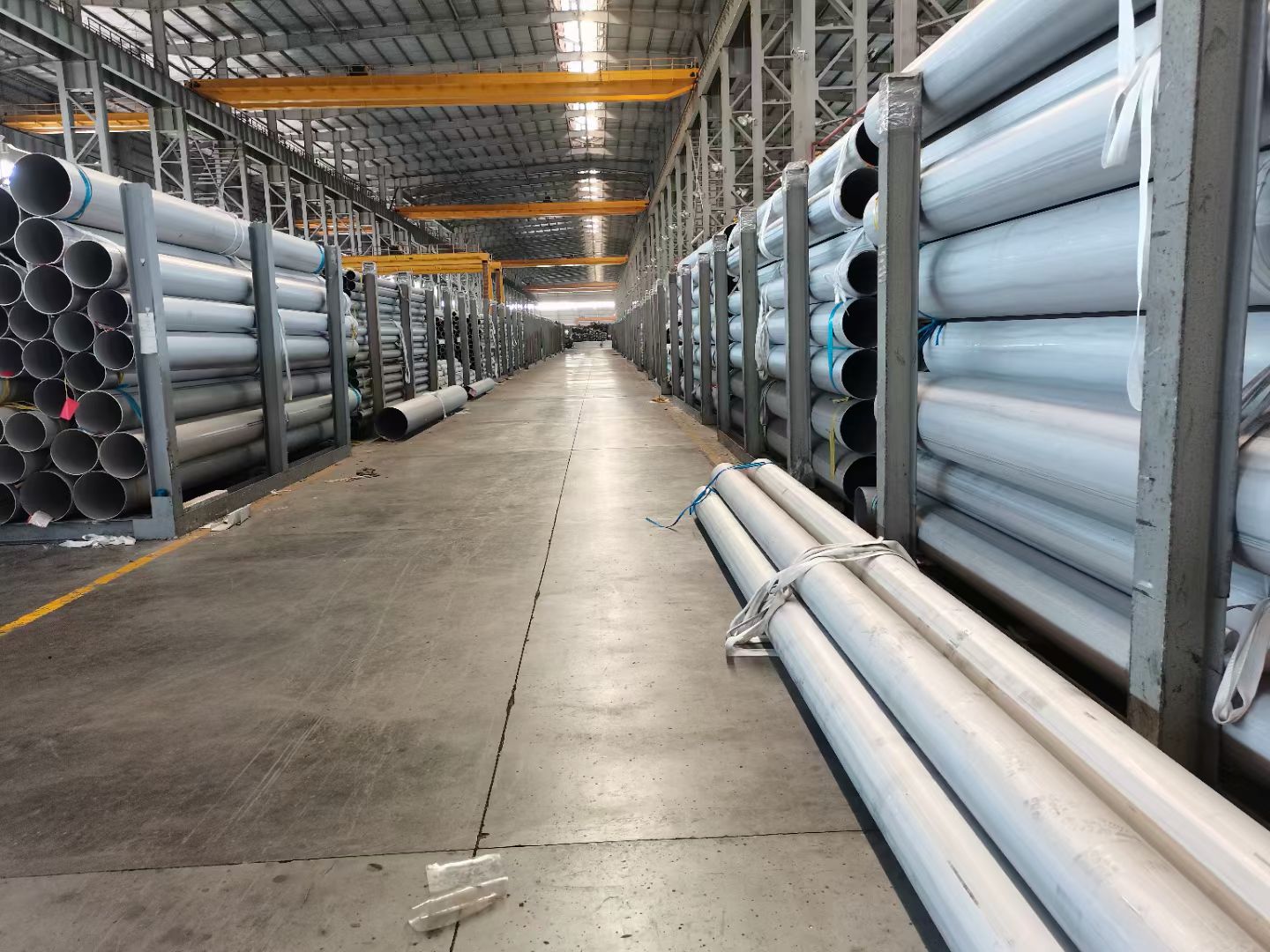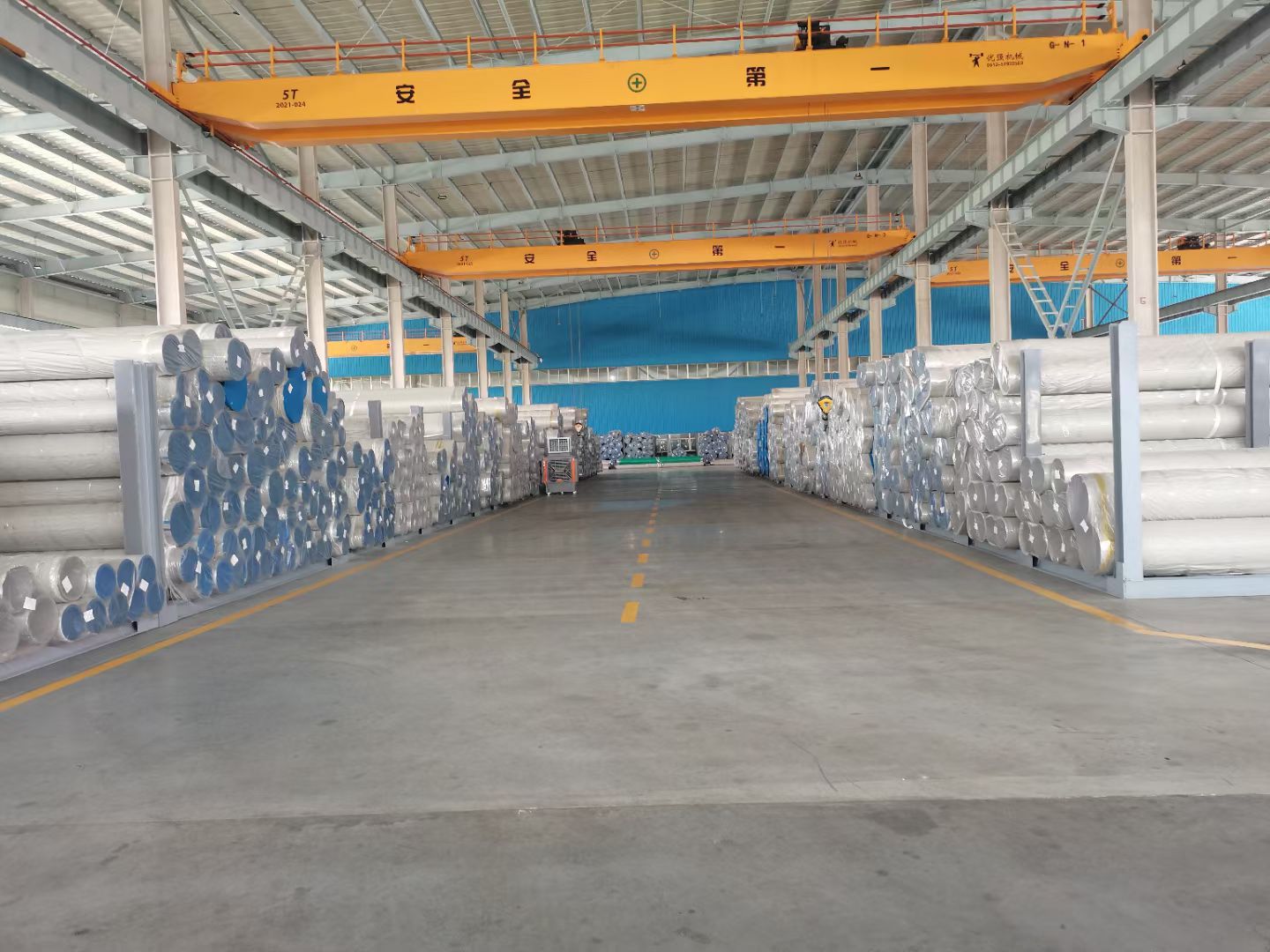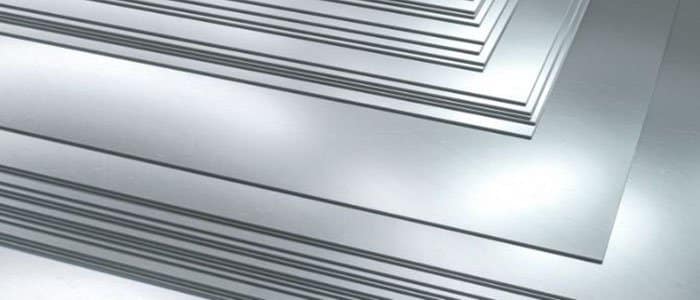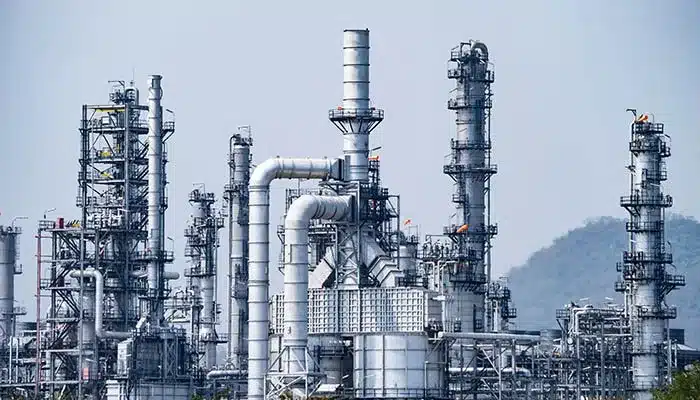Daxun Metal Group Co., Ltd. is a professional manufacturer and stockist of welded stainless steel pipes and tubes in China. We specialize in producing 304/304L, 316/316L, 321, 2205, and 2507 stainless steel welded pipes that comply with ASTM A312, EN, and GB standards.
With advanced manufacturing technology and strict quality control, we provide high-quality welded stainless steel pipes, covering a full range of sizes, wall thicknesses, and surface finishes. Our products are widely used in industrial stainless steel piping systems, chemical processing, food and beverage, and construction applications.
We offer customized stainless steel pipe solutions, reliable performance, and fast global delivery.
In this article, you’ll learn about the price, production process, mechanical properties, and application areas of welded stainless steel pipes.

Introduction
Daxun will provide a detailed introduction to welded stainless steel pipe: A Complete Guide to High-Quality Stainless Steel Welded Pipe.
1.Welded stainless steel pipe, also known as stainless steel welded pipe or tube, is produced by rolling and longitudinally welding stainless steel sheets or strips. This type of stainless steel tubing is widely used in petrochemical, food processing, pharmaceutical, heat exchanger, machinery manufacturing, and architectural decoration industries.
2.Thanks to its cost-effectiveness, excellent straightness, precise dimensions, reliable performance, and high production efficiency, welded stainless steel pipes have become one of the most widely used stainless steel products in both industrial and residential applications around the world. They are commonly applied in industrial stainless steel piping systems, decorative stainless steel tube installations, and fluid transportation projects.
Definition of Welded Stainless Steel Pipe and Commonly Used Standards in Global Industries
Welded stainless steel pipes are manufactured by rolling stainless steel strips or sheets into round, square, or rectangular tubes, followed by high-frequency welding (HFW) or submerged arc welding (SAW).
Depending on the production process and application, welded stainless steel pipes can be categorized as:
- Industrial welded stainless steel pipes – compliant with ASTM A312, A249, A269, and GB/T 12771 standards, commonly used in chemical, petrochemical, and industrial piping systems.
- Decorative welded stainless steel pipes – compliant with GB/T 18705 and JIS G3447, ideal for architectural, furniture, and interior decoration projects.
- Sanitary and food-grade welded stainless steel pipes – compliant with ASTM A270 and ISO 2037, suitable for food processing, beverage, pharmaceutical, and sanitary applications.
Common materials include 304, 304L, 316L, 321, 310S, 2205, and 2507 duplex stainless steel, offering options for industrial, decorative, and sanitary piping needs.
Stainless Steel Welded Pipe Production Process – Detailed Production Steps.
- Raw Material Preparation
High-quality stainless steel strips or coils are selected for production. The materials must be pickled, leveled, and edge-sheared to ensure a clean, impurity-free surface and a flat, flawless plate. This step guarantees the stainless steel welded pipes have consistent quality from the very beginning. - Pipe Forming
- Small-diameter welded stainless steel pipes are formed into the desired shape (round or square) at a constant speed using a continuous forming unit.
- Large-diameter welded stainless steel pipes are formed into round tubes using a hydraulic bending machine (JCO). To ensure uniform roundness, the tubes are further shaped with a shaping machine.
- Welding
Various welding methods are applied depending on pipe specifications:
- TIG welding (tungsten inert gas arc welding)
- High-frequency (HF) welding
- Submerged arc welding (for thicknesses over 15mm)
- Plasma welding
These methods ensure a dense, smooth weld free of pores, dents, or other defects. Each welded joint undergoes X-ray inspection to guarantee quality.
- Heat Treatment and Straightening
After welding, pipes undergo solution heat treatment (950°C–1150°C) and mechanical straightening. This restores and enhances corrosion resistance (including pitting resistance) and ensures uniform mechanical strength, allowing welded stainless steel pipes to maintain excellent performance in extreme industrial environments. - Surface Treatment: Pickling, Polishing, and Degreasing
This step removes scale, oil stains, and weld marks, ensuring internal and external surfaces are clean. Depending on project requirements, pipes can undergo polishing, brushing, or mirror finishing for decorative or sanitary applications. - Inspection and Packaging
Quality checks include:
- Eddy current testing (ECT)
- Ultrasonic testing (UT / RT100%)
- Hydrostatic pressure testing
- Dimensional consistency inspection
Only pipes meeting all standard requirements proceed to packaging. Wooden crates and pallets are used to prevent damage during transportation.
- Traceability
We maintain full traceability for each welded stainless steel pipe by tracking:
- Raw material batch numbers
- Production process numbers
- Inspection records
From receipt of stainless steel strips to final shipment, each pipe is documented with a production process card and unique identifiers, ensuring complete traceability.
Common specifications and size ranges of stainless steel welded pipes
—Please refer to the size chart(We support customization of uncommon sizes not specified in the form: special thickness and large diameter welded stainless steel pipes.):
| Nominal Bore | Outside Diameter | Sch-5S | Sch-10S | Sch-40S | Sch-80S | Sch-160S | Sch-XXS | |||||||
| mm | INCH | mm | Wt | Weight | Wt | Weight | Wt | Weight | Wt | Weight | Wt | Weight | Wt | Weight |
| mm | (Kg/mt) | mm | (Kg/mt) | mm | (Kg/mt) | mm | (Kg/mt) | mm | (Kg/mt) | mm | (Kg/mt) | |||
| 3 | 1/8 | 10.3 | 1.24 | 0.276 | 1.24 | 0.28 | 1.73 | 0.37 | 2.41 | 0.47 | – | – | – | – |
| 6 | 1/4 | 13.7 | 1.24 | 0.390 | 1.65 | 0.49 | 2.24 | 0.631 | 3.02 | 0.80 | – | – | – | – |
| 10 | 3/8 | 17.1 | 1.24 | 0.490 | 1.65 | 0.63 | 2.31 | 0.845 | 3.20 | 1.10 | – | – | – | – |
| 15 | 1/2 | 21.3 | 1.65 | 0.800 | 2.11 | 1.00 | 2.77 | 1.27 | 3.75 | 1.62 | 4.75 | 1.94 | 7.47 | 2.55 |
| 20 | 3/4 | 26.7 | 1.65 | 1.03 | 2.11 | 1.28 | 2.87 | 1.68 | 3.91 | 2.20 | 5.54 | 2.89 | 7.82 | 3.63 |
| 25 | 1 | 33.4 | 1.65 | 1.30 | 2.77 | 2.09 | 3.38 | 2.50 | 4.55 | 3.24 | 6.35 | 4.24 | 9.09 | 5.45 |
| 32 | 1 1/4 | 42.2 | 1.65 | 1.65 | 2.77 | 2.70 | 3.56 | 3.38 | 4.85 | 4.47 | 6.35 | 5.61 | 9.70 | 7.77 |
| 40 | 1 1/2 | 48.3 | 1.65 | 1.91 | 2.77 | 3.11 | 3.68 | 4.05 | 5.08 | 5.41 | 7.14 | 7.25 | 10.16 | 9.54 |
| 50 | 2 | 60.3 | 1.65 | 2.40 | 2.77 | 3.93 | 3.91 | 5.44 | 5.54 | 7.48 | 8.74 | 11.1 | 11.07 | 13.44 |
| 65 | 2 1/2 | 73.0 | 2.11 | 3.69 | 3.05 | 5.26 | 5.16 | 8.63 | 7.01 | 11.4 | 9.53 | 14.9 | 14.2 | 20.39 |
| 80 | 3 | 88.9 | 2.11 | 4.51 | 3.05 | 6.45 | 5.49 | 11.30 | 7.62 | 15.2 | 11.1 | 21.3 | 15.24 | 27.65 |
| 100 | 4 | 114.3 | 2.11 | 5.84 | 3.05 | 8.36 | 6.02 | 16.07 | 8.56 | 22.3 | 13.49 | 33.54 | 17.12 | 41.03 |
| 125 | 5 | 141.3 | 2.77 | 9.47 | 3.40 | 11.57 | 6.55 | 21.8 | 9.53 | 31.97 | 15.88 | 49.11 | 19.05 | 57.43 |
| 150 | 6 | 168.3 | 2.77 | 11.32 | 3.40 | 13.84 | 7.11 | 28.3 | 10.97 | 42.7 | 18.2 | 67.56 | 21.95 | 79.22 |
| 200 | 8 | 219.1 | 2.77 | 14.79 | 3.76 | 19.96 | 8.18 | 42.6 | 12.7 | 64.6 | 23.0 | 111.2 | 22.23 | 107.8 |
| 250 | 10 | 273.1 | 3.40 | 22.63 | 4.19 | 27.78 | 9.27 | 60.5 | 12.7 | 96.0 | 28.6 | 172.4 | 25.40 | 155.15 |
| 300 | 12 | 323.9 | 3.96 | 31.25 | 4.57 | 36.00 | 9.52 | 73.88 | 12.7 | 132.0 | 33.32 | 238.76 | 25.40 | 186.97 |
| 350 | 14 | 355.6 | 3.96 | 34.36 | 4.78 | 41.3 | 11.13 | 94.59 | 19.05 | 158.08 | 35.71 | 281.70 | – | – |
| 400 | 16 | 406.4 | 4.19 | 41.56 | 4.78 | 47.29 | 12.7 | 123.30 | 21.41 | 203.33 | 40.46 | 365.11 | – | – |
| 450 | 18 | 457.2 | 4.19 | 46.80 | 4.78 | 53.42 | 14.27 | 155.80 | 23.8 | 254.36 | 45.71 | 466.40 | – | – |
| 500 | 20 | 508.0 | 4.78 | 59.25 | 5.54 | 68.71 | 15.09 | 183.42 | 26.19 | 311.2 | 49.99 | 564.68 | – | – |
| 600 | 24 | 609.6 | 5.54 | 82.47 | 6.35 | 94.45 | 17.48 | 255.41 | 30.96 | 442.08 | 59.54 | 808.22 | – | – |
ASTM Specifications and Tolerances for Welded Stainless Steel Pipe and Tubing:
| Specification | Allowable Outside Diameter | Allowable Wall | Exact Length | Testing | ||||
| Variation in mm | Thickness Variation | Tolerance in mm | ||||||
| Nominal Diameter | Over | Under | %Over | %Under | Over | Under | Flattening Test | |
| ASTM-A213 | Under 25.4 | 0.1016 | 0.1016 | +20 | 0 | 3.175 | 0 | Tension Test |
| Seamless Boiler | 25.4-38.1 incl | 0.1524 | 0.1524 | +22 | 0 | 3.175 | 0 | Flare Test |
| Superheater and | 38.1-50.8 excl | 0.2032 | 0.2032 | +22 | 0 | 3.176 | 0 | Hardness Test |
| Heat Exchanger | 50.8-63.5 excl | 0.254 | 0.254 | +22 | 0 | 4.46 | 0 | |
| Tubes | 63.5-76.2 excl | 0.3048 | 0.3048 | +22 | 0 | 4.76 | 0 | 100% Hydrostatic test |
| 76.2-101.6 incl | 0.381 | 0.381 | +22 | 0 | 4.76 | 0 | Refer to ASTM A-450 | |
| Under 25.4 | 0.1016 | 0.1016 | +10 | -10 | 3.175 | 0 | ||
| ASTM-A249 | 25.4-38.1 incl | 0.1524 | 0.1524 | +10 | -10 | 3.175 | 0 | Tension Test |
| Welded Boiler | 38.1-50.8 Excl | 0.2032 | 0.2032 | +10 | -10 | 3.175 | 0 | Flattening Test |
| Superheater, Heat | 50.0-63.5 excl | 0.254 | 0.254 | +10 | -10 | 4.762 | 0 | Flange Test |
| Exchanger And | 63.5-76.2 excl | 0.3848 | 0.3048 | +10 | -10 | 4.762 | 0 | Reverse Bend Test |
| Condenser Tubes | 76.2-101.6 incl | 0.381 | 0.381 | +10 | -10 | 4.762 | 0 | Hardness Test |
| Minimum Wall tubes, + 18% 0 available, On request | 100% Hydrostastic Test | |||||||
| Refer to ASTM A-450 | ||||||||
| Untp 12.7 | 0.13 | 0.13 | +15 | -15 | 3.2 | 0 | Flare Test (Seamless Only) | |
| ASTM-A269 | 12.7-38.1 excl | 0.13 | 0.13 | +10 | -10 | 3.2 | 0 | Flange Test (Welded Only) |
| Seamless & Welded | 38.1-88.9 excl | 0.25 | 0.25 | +10 | -10 | 4.8 | 0 | Hardness Test |
| Tubing for General | 88.9-139.7 excl | 0.38 | 0.38 | +10 | -10 | 4.8 | 0 | Reverse Flattening Test |
| Service | 139.7-203.2 excl | 0.76 | 0.76 | +10 | -10 | 4.8 | 0 | (Welded only) |
| 100% Hydrostatic Test | ||||||||
| Refer to ASTM-A269 | ||||||||
| 25.4 | 0.05 | 0.20 | +10.0 | -10.0 | 3.2 | 0 | ||
| 38.1 | 0.05 | 0.20 | +10.0 | -10.0 | 3.2 | 0 | Reverse flattening Test | |
| ASTM-A270 | 50.8 | 0.05 | 0.28 | +10.0 | -10.0 | 3.2 | 0 | 100% Hydrostastic Test |
| Seamless & Welded | 60.5 | 0.05 | 0.28 | +10.0 | -10.0 | 3.2 | 0 | External’ polish on all tubes |
| Sanitary Tubing | 76.2 | 0.08 | 0.30 | +10.0 | -10.0 | 3.2 | 0 | Refer to ASTM A-270 |
| 101.6 | 0.08 | 0.38 | +10.0 | -10.0 | 4.8 | 0 | ||
| 3.175-38.1 incl | 0.4 | 0.79 | Minimum Wall | 6.4 | 0 | |||
| 38.1-1016 incl | 0.79 | 0.79 | 12.5% under | 6.4 | 0 | Tension Test | ||
| ASTM-A312 | 101.6-203.2 incl | 1.59 | 0.79 | nominal wall | 6.4 | 0 | Flattening Test | |
| Seemless & Welded | Specified | 100% Hydrostatic Test | ||||||
| pipe | (Normally Random | Refer to ASTM A-530 | ||||||
| Lengths ordered) | ||||||||
| ASTM A-358 | 219.08-750mm | +0.5% | -0.3 | 6.0 | Refer to ASTM A-530 | |||
| Welded pipe | ||||||||

Advantages of Welded Stainless Steel Pipe
- Excellent and Reliable Corrosion Resistance
Welded stainless steel pipes provide outstanding resistance to acids, alkalis, and oxidation. The corrosion resistance varies by grade: 304 < 304L < 321 < 316 < 316L < 310 < 904L.
Grades like 316L, 310, and 904L offer long-term durability in harsh chemical and humid environments, making them ideal for industrial stainless steel piping systems and chemical process applications. - Superior Surface Finish and Consistency
Through polishing and pickling, welded stainless steel pipes achieve a smooth, uniform surface, suitable for decorative applications, sanitary equipment, and clean piping systems. These high-quality surfaces also meet the stringent requirements of food, beverage, and pharmaceutical industries. - High Dimensional Accuracy
Welded stainless steel pipes provide excellent production continuity, with precise control of outer diameter and wall thickness tolerances. This makes them easy to assemble, weld to fittings, and ensures consistent performance in large-scale industrial installations. - Cost-Effectiveness
Compared to seamless stainless steel pipes, welded pipes offer:
- Higher production efficiency
- Better raw material utilization
- More competitive pricing
This makes welded stainless steel pipes a preferred choice for industrial, commercial, and decorative projects requiring both quality and cost-effectiveness.
Applications of welded stainless steel pipe
Welded stainless steel pipes are widely used in medium- and low-pressure piping systems across nearly all industries. Typical applications include:
- Gas pipelines – for safe and reliable gas transportation in industrial and residential settings.
- Natural gas pipelines – suitable for both distribution and transmission networks.
- Chemical and petrochemical pipelines – ideal for transporting corrosive chemicals and process fluids.
- Food processing and beverage pipelines – compliant with sanitary standards for food-grade stainless steel pipes.
- Pharmaceutical and bioengineering equipment – used in sanitary piping systems requiring high cleanliness and corrosion resistance.
- Heat exchangers and condenser systems – providing durability in industrial heat transfer applications.
- Architectural decoration and handrails – polished stainless steel welded tubes for aesthetic and functional purposes.
- HVAC systems and fluid pipelines – reliable solution for air conditioning, ventilation, and water transport systems.
These applications demonstrate the versatility of welded stainless steel pipes, covering both industrial and decorative uses, and emphasizing their corrosion resistance, durability, and high-quality finish.
Welded stainless steel pipe VS seamless stainless steel pipe
| Comparison items | Welded stainless steel pipe | seamless stainless steel pipe |
| Production method | Welded from steel strips | Hot punching from round billet |
| weld | There are welds, which are smoothed after treatment | No welds |
| cost | Lower cost | Higher costs |
| Appearance | Smooth and beautiful | Relatively rough |
| Accuracy | Accurate size | Slightly larger deviation |
| application | Medium and low pressure fluid systems, decoration | High pressure and high temperature occasions |
In general, welded stainless steel pipes are more suitable for scenarios that pursue appearance, economy, and mass production, while seamless stainless steel pipes are more suitable for high pressure and special working conditions.
Welded Stainless Steel Pipe Material Comparison and Selection Guide
When choosing welded stainless steel pipes, it is important to understand the performance differences of different stainless steel materials. This helps you select the most suitable pipe for your industrial, commercial, or decorative projects based on working conditions such as temperature, pressure, corrosiveness, and mechanical strength.
Below is a comparison of commonly used stainless steel pipe materials:
- 304 Stainless Steel Pipe
Advantages:
- Common austenitic stainless steel with excellent corrosion resistance and versatile processing properties.
- Suitable for food processing, decorative, construction, and general industrial applications.
- Low cost, widely available stock sizes, and high value for money.
Disadvantages:
- Sensitive to chloride ion environments (e.g., seawater), prone to pitting corrosion.
- Moderate oxidation resistance at high temperatures.
- 304L Stainless Steel Pipe
Advantages:
- Low-carbon version of 304, offering better resistance to intergranular corrosion during welding.
- Excellent weldability and reliable corrosion resistance.
Disadvantages:
- Slightly lower strength compared to 304.
- 316 Stainless Steel Pipe
Advantages:
- Contains molybdenum (Mo), providing improved corrosion resistance in seawater and chemical media, and excellent resistance to chloride pitting.
- Superior high-temperature strength compared to 304/304L.
Disadvantages:
- Slightly higher cost than 304/304L.
Applications: Chemical equipment, marine engineering, pharmaceuticals, heat exchangers.
- 316L Stainless Steel Pipe
Advantages:
- Low-carbon version of 316 (C ≤ 0.03%), ideal for welded and heat-affected zones, preventing intergranular corrosion.
- Excellent resistance to seawater and acidic media.
Disadvantages:
- Slightly higher cost than 316.
Applications: Marine facilities, chemical pipelines, medical equipment, reverse osmosis systems.
- 321 Stainless Steel Pipe
Advantages:
- Titanium-stabilized, preventing intergranular corrosion after welding.
- Maintains stability at high temperatures (600–900°C).
Disadvantages:
- Slightly lower corrosion resistance in strong acids compared to 316/316L.
Applications: High-temperature piping, heat exchangers, boilers, aircraft exhaust systems.
- 310 / 310S Stainless Steel Pipe
Advantages:
- High chromium and nickel content (Cr 25%, Ni 20%) provides excellent oxidation and high-temperature resistance (up to 1100°C).
- Maintains strength and toughness at elevated temperatures.
Disadvantages:
- High cost, unsuitable for highly corrosive environments.
Applications: Kiln tubes, heat treatment equipment, combustion chambers, high-temperature industrial processes.
- 904L Stainless Steel Pipe
Advantages:
- Ultra-low carbon, high-nickel, high-molybdenum austenitic stainless steel.
- Extremely resistant to strong acids (sulfuric, phosphoric, acetic acids, and chlorides).
- Excellent resistance to pitting, crevice, and stress corrosion; suitable for extreme environments.
Disadvantages:
- High cost, limited stock, most sizes require custom production.
Applications: Chemical equipment, desalination systems, acidic production environments.
- 2205 Duplex Stainless Steel Pipe (Duplex 2205)
Advantages:
- Austenite + ferrite duplex structure offers high strength and excellent resistance to chloride stress corrosion cracking.
- Mechanical properties superior to 304/316; corrosion resistance comparable to or better than 316L.
Disadvantages:
- Welding requires strict heat input control.
Applications: Oil and gas, offshore platforms, papermaking, desulfurization equipment.
- 2507 / S32750 Super Duplex Stainless Steel Pipe (Super Duplex 2507)
Advantages:
- Higher Cr, Ni, and Mo content; strength approximately twice that of 304.
- Extremely resistant to pitting, crevice corrosion, and chloride stress corrosion.
- Adaptable to high-temperature and high-pressure environments.
Disadvantages:
- High cost; stringent welding requirements.
Applications: Marine engineering, chemical equipment, seawater heat exchangers, offshore drilling platforms.
10.Recommendations for material selection of welded stainless steel pipes (summary table):
| Material | Main Features | Typical uses | Cost level |
| 304 | Universal, cost-effective | Food, architecture, decoration | ★ |
| 304L | Anti-intergranular corrosion | Welding parts, containers | ★★ |
| 316 | Contains molybdenum, chloride resistant | Chemical industry, marine environment | ★★ |
| 316L | Low carbon, good weldability | Medicine, seawater systems | ★★★ |
| 321 | Contains titanium, high temperature stable | Heat exchangers, boilers | ★★ |
| 310S | High temperature resistant and antioxidant | Furnace tubes, high temperature equipment | ★★★ |
| 904L | Super acid-resistant, high nickel-molybdenum | Chemical industry, acidic media | ★★★★ |
| 2205 | High strength, stress corrosion resistance | Marine engineering, desulfurization system | ★★★ |
| 2507 | Super duplex, extremely strong corrosion resistance | Offshore platforms, seawater heat exchangers | ★★★★★ |

Quality Control and Certification
Strictly implements the ISO 9001:2015 quality management system
All welds undergo 100% non-destructive testing (NDT) and 100% radiographic testing (RT)
EN 10204 3.1/3.2 material certification available
Third-party testing (SGS, TÜV, BV) supported
Frequently Asked Questions (FAQs)
- Can welded stainless steel pipe be used in high-pressure systems?
Welded stainless steel pipe is generally used in medium- and low-pressure piping systems. If the welds are heat-treated and pass 100% flaw detection, they can also be used in systems with certain pressure levels. For example, small-diameter welded stainless steel pipe is widely used in various high-pressure piping systems.
- Will the welds affect the corrosion resistance of the pipe?
No. Modern welding processes (TIG/plasma welding) combined with solution heat treatment ensure that the welds have the same corrosion resistance as the parent material.
- Can you customize non-standard sizes for welded pipe?
Yes. We support customized wall thickness, length, surface treatment, and special alloy grades. Please contact Daxun immediately with a detailed request form.
- What are your packaging options?
We typically use waterproof plastic bags and impact-resistant wooden boxes or steel strapping for export, which is suitable for export and prevents crushing and collision during transportation.
Summary
Stainless steel welded pipe is widely used in many industrial projects due to its excellent corrosion resistance, precise dimensional control, smooth surface quality, and high cost-effectiveness.
It is an ideal stainless steel piping solution for chemical and petroleum pipelines, fluid transportation systems, and architectural decoration projects.
Choosing Daxun means choosing:
- Extensive experience in various pipeline industrial projects worldwide
- Comprehensive pipeline solutions
- High-quality welding processes
- International standard certification and flexible customization capabilities
- Fast delivery and global service
For more information about welded stainless steel pipe, please contact a Daehyun Metal Group sales representative.




